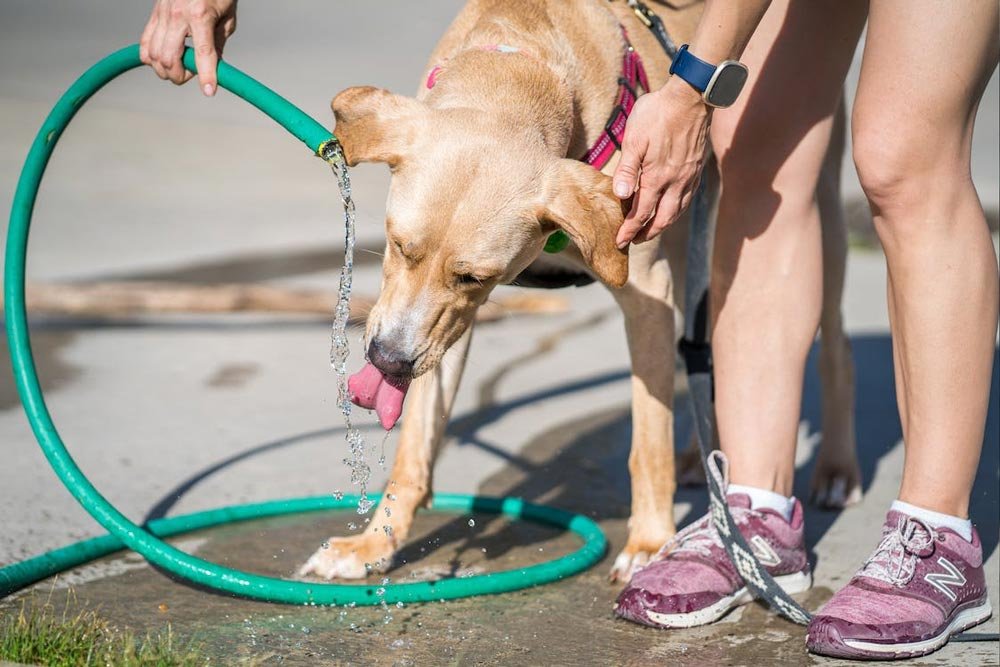It’s crucial for you to make sure your pet keeps hydrated as a responsible pet owner, especially in the summer when it’s hot outside or after strenuous exercise. Dogs require enough water to maintain their general health and wellbeing, just like people do.
In this post, we’ll look into the importance of water for dogs and offer some advice on maintaining proper hydration.

The Importance of Hydration for Dogs
Water is essential for dogs as it plays a vital role in various bodily functions. It helps regulate body temperature, aids in digestion, flushes out toxins, and keeps joints lubricated. Dehydration can have serious consequences for your dog’s health, leading to issues such as urinary tract infections, kidney problems, and heatstroke.
It’s important to note that dogs can’t regulate their body temperature as effectively as humans, making them more susceptible to heat-related illnesses. Ensuring that your dog is properly hydrated is crucial in preventing heat exhaustion or heatstroke, especially during hot weather or when engaging in physical activities.
Signs of Dehydration in Dogs
Recognizing the signs of dehydration in dogs is essential for prompt intervention. Some common symptoms of dehydration include:
- Excessive panting
- Dry and sticky gums
- Lethargy or weakness
- Loss of appetite
- Sunken eyes
- Dry nose
- Dark yellow urine
If you notice any of these signs, it’s important to take immediate action to rehydrate your dog. Providing access to fresh water and encouraging them to drink is the first step. If the symptoms persist or worsen, it’s best to consult your veterinarian for further guidance.
Also Check: 10 Best Dog Walking Tips for Beginners
Tips for Keeping Your Dog Well-Watered
Here are some simple yet effective tips to ensure your dog stays well-hydrated:
- Always provide access to fresh water: Make sure your dog has access to clean and fresh water at all times. Keep multiple water bowls around the house, especially in areas where your dog spends most of their time.
- Change the water regularly: Dogs prefer clean water, so it’s important to change their water bowl regularly. Stagnant or dirty water may discourage them from drinking.
- Consider a pet water fountain: Some dogs are more inclined to drink from running water. Investing in a pet water fountain can encourage your dog to drink more.
- Monitor water intake: Keep an eye on how much water your dog is drinking. Increased thirst or excessive drinking could be a sign of an underlying health issue, so it’s important to consult your vet if you notice any significant changes.
- Offer water-rich foods: Incorporate water-rich foods into your dog’s diet, such as cucumbers, watermelon, or broth-based treats. These can help supplement their hydration needs.
- Hydrate during outdoor activities: If you’re taking your dog for a walk, hike, or any outdoor activity, bring water along. Offer regular water breaks to prevent dehydration.
Conclusion
Keeping your dog well-hydrated is essential for their overall health and well-being. By ensuring access to fresh water, monitoring their water intake, and recognizing the signs of dehydration, you can help prevent potential health issues and keep your furry friend happy and healthy. Remember, a well-hydrated hound is a happy hound!




